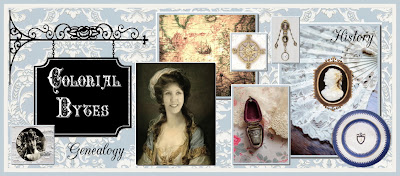Hoping that no one asks question we try to use the right words to help them understand the unique relationship you, or they have. If they understand or are family with the common language of relation sanguinity. It makes your job easier.
So the statement that Daniel Boone is your the great-uncle of my great-great-grandfather's third cousin, shouldn't be a problem. Right? I will give you a pen and watch you chart that relationship. No, you say?
Hard to conceptualize? A bit confusing, right? Don't worry you are not alone.
It is easier to think of what your shared ancestors would call you both - if your closet shared direct-line ancestor is your great-great-grandparents, and they call you both "great-great-grandchildren," then you have no removal, you two are second cousins. Once, Twice, Thice Removed...Have I lost you? Well hang on a bit.
Actually, it is only by being familiar with the system we use in designating these relationships, that you can see there is a consistent formula to the kinship titles we assign to various family members. In English-speaking societies, we classify family relationship based on gender, generation, and consideration of consanguinity (direct descendants) and by what is called, immediate afinal (in-law) relationships. Our common familiarity is with immediate family and direct lines – brother, sister, cousins, aunts/uncles and the (great) grandparents. It starts to get confusing when differentiating between the “degrees” and “removals” of cousins.
Something I am sure most of you will agree with as we all have wrestled with this system at one time or another.
First, Second, Third Cousins? What Does it Mean? The ordinals in this system, “first cousin”, “second cousin”, “third cousin”, all describe the degree of the cousin relationship or the number of generations to their closest ancestor. For example, your second cousin is a person you share great-grandparents with and is not your direct sibling.
 |
| Table of Consanguinity Showing Degrees of Relationships |
Here is the confusing part: there are two instances in your family tree that can share this title. This is a reflection of what cousins refer to each as. Up until now, each relationship in your family tree has inverse titles for each other. You are your aunt’s niece or nephew; you are your great-grandparents grandchild. Cousins refer to each other as cousins, but because of this, your first cousin’s kid is your first cousin once removed and you (the parent of their second cousin) are also their first cousin once removed – you each refer to each other as the same. This means that the child of your first cousin and the parents of your second cousin are both “first cousins once removed” despite each of them being generations apart.
Here is the breakdown:
FIRST COUSINS: Non-siblings that share grandparents
SECOND COUSINS: Non-siblings that share great-grandparents
THIRD COUSINS: Non-siblings that share great-great-grandparents
FIRST COUSINS ONCE REMOVED: Two people for whom the first cousin relationship is one generation removed.
FIRST COUSINS TWICE REMOVED: Two people for whom the second cousin relationship is two generations removed.
If this is still confusing, take a breath and remember they are not going anywhere and will still be your ancestor or relative tomorrow. You will in time and practice understand this classification system. Practice also always makes understanding so much easier. Try to use the chart with someone you are closer in relation to, and you will find it easier each time you use it to classify your unique blood relation to people more distantly related. Remember you can always pull out your file proving lineage and really impress everyone with your verifiable work. Because the proof is in the detailed genealogy work that you do anyway.
Good luck and enjoy your newly discovered relatives!

No comments:
Post a Comment
We are delighted that you would like to comment. You may first have to become a member of this blog to do so. You are encourage to join our blog members. Please join us. We would love to have your comments.
Note: Only a member of this blog may post a comment.